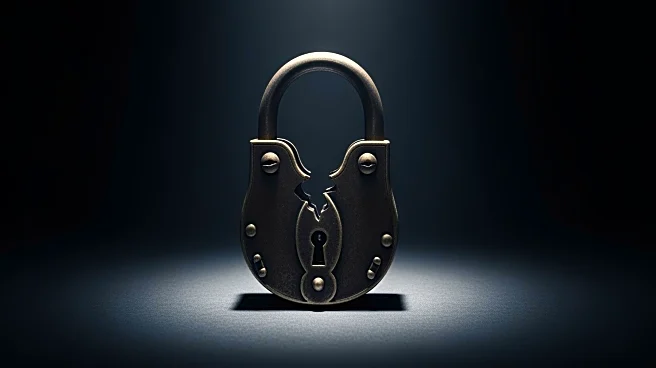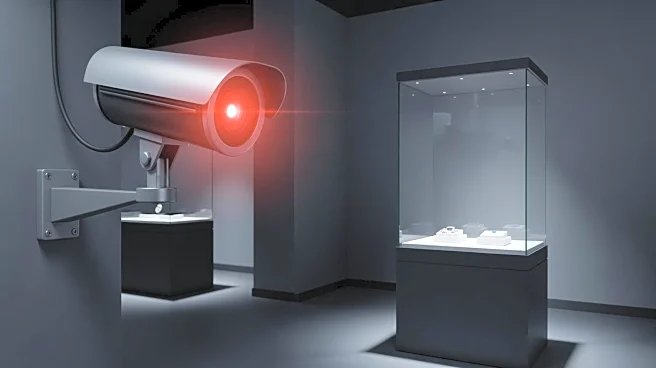What's Happening?
French authorities have apprehended two individuals suspected of involvement in the theft of valuable jewels from the Louvre Museum. The incident, which has drawn significant attention, is believed to
be an inside job, prompting police to intensify their investigation. The theft involved priceless jewels, and while two suspects are in custody, law enforcement is actively searching for two additional individuals connected to the crime. The Louvre, renowned for its extensive art collection, has been the site of heightened security measures following the incident.
Why It's Important?
The theft of jewels from the Louvre Museum underscores the challenges faced by cultural institutions in safeguarding valuable artifacts. This incident highlights vulnerabilities in security systems and the potential for insider involvement in high-profile crimes. The repercussions extend beyond the immediate loss, affecting the museum's reputation and potentially influencing security protocols at similar institutions worldwide. The ongoing investigation may lead to changes in how museums protect their collections, impacting stakeholders in the art and cultural sectors.
What's Next?
As the investigation progresses, French police are expected to continue their search for the remaining suspects. The outcome of this case could lead to increased security measures at the Louvre and other museums, as well as potential legal actions against those involved. The art community and cultural institutions will likely monitor developments closely, considering implications for future security strategies and collaborations with law enforcement to prevent similar incidents.
Beyond the Headlines
The Louvre jewel heist raises questions about the ethical responsibilities of museum staff and the effectiveness of current security protocols. It may prompt discussions on the balance between accessibility and security in cultural institutions, as well as the role of technology in preventing theft. Long-term, this incident could influence policies on employee vetting and surveillance systems within museums.











